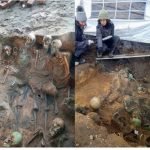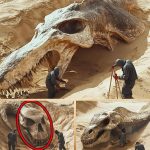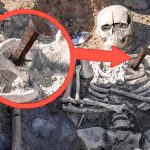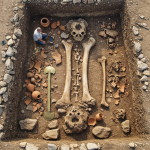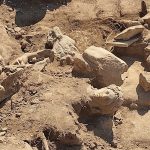See the Face of a 10,500-Year-Old Woman, Reconstructed by Archaeologists and Artists
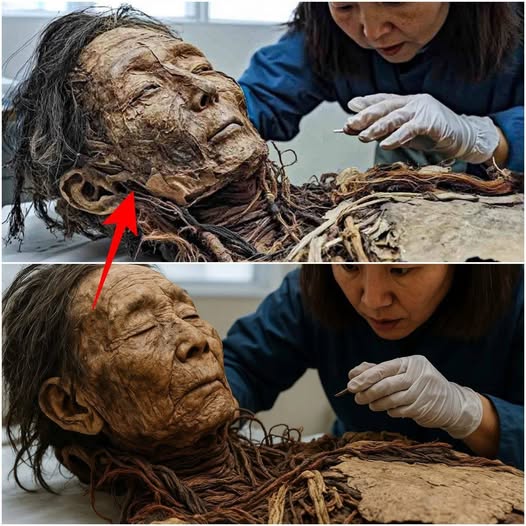
In the late 1980s, archaeologists discovered the remains of a woman who had lived in Belgium’s Meuse Valley roughly 10,500 years ago. Now, researchers say they have an idea of what she might have looked like.
Using well-preserved ancient DNA taken from the woman’s skull, scientists determined she had dark hair and blue eyes.
The woman belonged to the same hunter-gatherer population as the “Cheddar Man,” whose remains were found in England in 1903. But her DNA revealed she had slightly lighter-colored skin compared to Cheddar Man—who had dark skin and blue eyes—and other hunter-gatherers that lived in Western Europe during the Mesolithic period, or the Middle Stone Age.
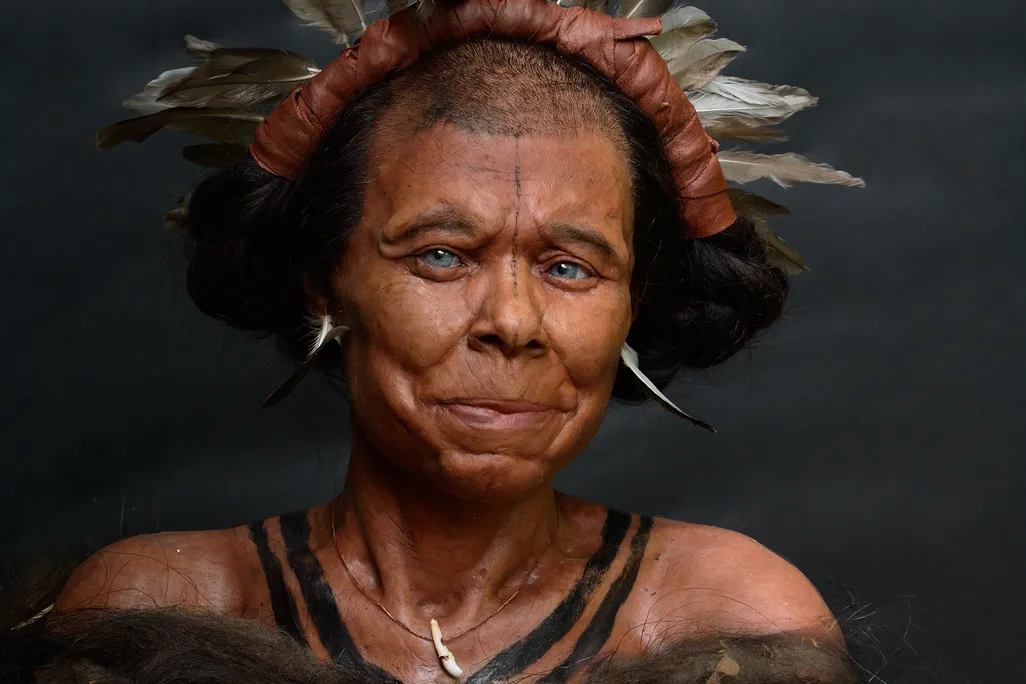
Fun facts: Cheddar Man
- Named for the Cheddar Gorge in Somerset, England, where his remains were discovered, Cheddar Man is the oldest nearly complete skeleton of a modern human found in Britain.
- Scientists have determined he stood about 5 feet 5 inches tall, had dark skin and blue eyes, died in his early 20s and was lactose-intolerant.
This discovery suggests Mesolithic hunter-gatherers had varying skin tones, which may have been influenced by factors like their diet, migration patterns and their local climate.
“Until now, most finds from that time indicated a darker skin,” says Isabelle De Groote, an archaeologist at Ghent University who led the reconstruction project, to the London Times’ Bruno Waterfield. “This indicates that there was a greater diversity in skin pigmentation than we previously thought.”
From her remains, researchers were also able to deduce that the woman had strong brow ridges and a high nasal bridge, and that she was between 35 and 60 years old when she died. Based on Mesolithic artifacts found in the Meuse Valley—such as fish remains, wild game bones and stone tools—scientists suspect her group was nomadic, reports CNN’s Jack Guy.
That’s because a population dependent on these natural resources would have to relocate to where they’re abundant. Researchers have also found the remains of poles, which suggests the Mesolithic hunter-gatherers were setting up camps.
“They moved around,” De Groote tells the Times.
/https://tf-cmsv2-smithsonianmag-media.s3.amazonaws.com/filer_public/6b/ab/6bab3650-a4a1-4585-9841-e18ecf412edc/copyright-2025-vakgroep-archeologie-tekening-ulco-glimmerveen.webp)
The woman’s remains were found in 1988 during archaeological explorations of the Margaux cave, which is located near the present-day city of Dinant in Belgium, near the border with France. She was buried alongside other women, which was unusual because other known Mesolithic burial sites contain the remains of women, men and children, reports CNN.
Many of the remains were covered with stone fragments and sprinkled with ochre, a natural pigment. One woman’s skull showed signs of cut marks that were made after her death.
The burial cave also appears to have been used for several hundred years, which suggests Mesolithic groups had “places of memory that people would go back to despite their mobile hunter-gatherer lifestyle,” De Groote tells CNN.
At the time of the initial discovery, researchers did not have any way to investigate the women’s DNA. Now, however, technology has advanced enough to allow scientists to analyze ancient genetic material from the site.
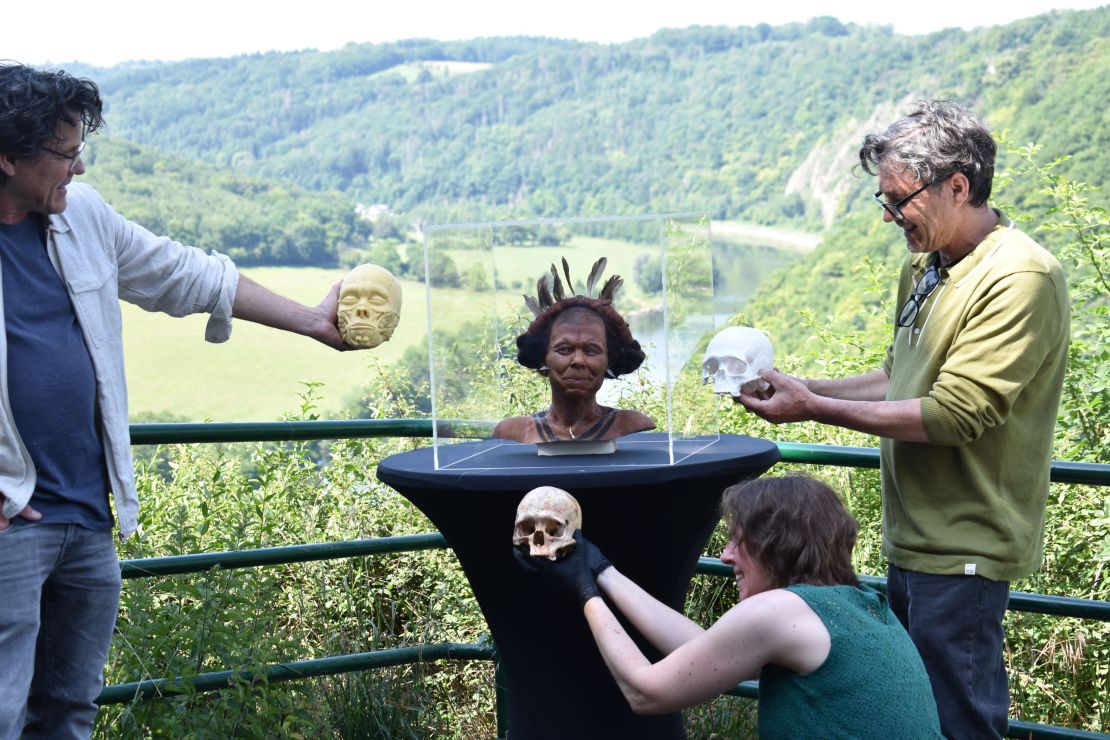
Moving forward, they hope to use the DNA to figure out whether and how the women were related to one another, per CNN. They also want to learn more about their diets, including how much fish they ate.
The research team behind the work, known as the ROAM project (Regional Outlook on Ancient Migration), is undertaking an effort to learn more about the first modern humans to permanently settle in what is now southern Belgium. Data on hunter-gatherers in the region before the first farmers migrated there “is greatly ignored,” according to the project’s website. “Nevertheless, it represents a crucial phase for better understanding the permanent re-colonization of northern Europe after the last ice age.”
Soon, the facial reconstruction of the woman will head out on tour. Starting in September, the woman will be on display at various museums throughout Belgium as part of a traveling exhibition.
Before she begins the journey, researchers want to give the woman a name. They’re inviting members of the public to vote before June 30, choosing between three names inspired by the geography: Margo, a nod to the Margaux cave in which her remains were discovered; Freyà, based on the surrounding Freyr mountain range; or Mos’anne, a riff on the broader Meuse Valley, which is called “Mosan” in French.



